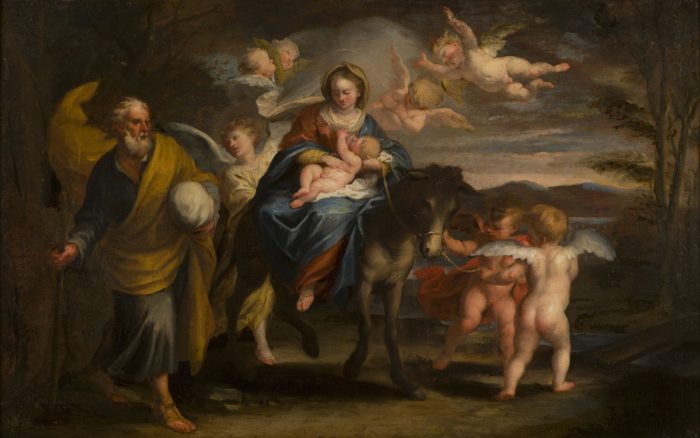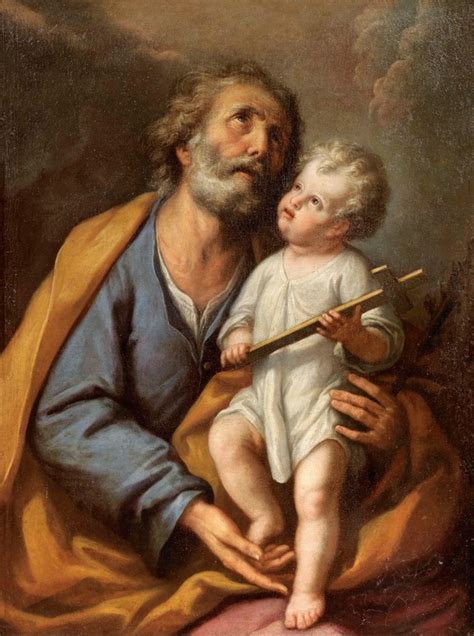Click the artworks to find out more about them
Giuseppe Badaracco (1605–1657)
Born in 1605 in Genoa into a wealthy family, Giuseppe Badaracco was well supported by his family and friends. Keen to explore means of artistic expression, he became an apprentice for his first teachers, Bernardo Strozzi (1581-1644) and Giovanni Andrea Ansaldo (1584-1638), both active in his hometown of Genoa. A document dated 1619 mentions Badaracco as an apprentice in the shop of Bernardo Strozzi. In the following years he completed his training at Giovanni Ansaldo’s studio and in 1628 he received the first public commission: an altarpiece for the parish church of Voltaggio.
In a short time, he came to compose things of his own invention. Eager to further his knowledge, Badaracco moved to Florence and stayed there for several years. He was inspired by the Tuscan vibrant artistic scene, but especially by the works of Andrea del Sarto, and thereafter altered his style in imitation. He copied many of them, and became a very good imitator of the artist, and thus produced many reputable works in Florence which are said to have been collected by the local nobility.
Around 1640 Badaracco traveled to Corsica where he painted altarpieces for local churches. He stayed in Corsica for about two years, developing relationships with local patrons that endured even after his return to Genoa. Giuseppe was the Genoese artist who by far had the greatest influence on the development of Corsican art. The austere and didactic style of his religious paintings was appreciated to such an extent that in the following centuries copies of his paintings were ordered from local artists. One example of this is the Virgin and St. Joseph interceding for the souls in purgatory completed in 1642 for the cathedral of Saint Mary in Bastia. Eighteenth-century copies of this painting are recognisable in the churches of Moltifao, Meria, Tenda and Ville di Paraso, while a further copy, dated to the middle of nineteenth century, was painted by the Umbrian artist Luigi Brunetti for the parish church of Palasca.
Badaracco returned to Genoa in 1644, the year in which he married a woman named Maria Maddalena. On August 18, 1645, his first son was born, Giovanni Raffaele (1648-1726), who became a painter, ultimately taking over his father’s workshop. As a father, Badaracco valued education and is described as having taken care of it with great vigilance. Between 1644 and 1655 Giuseppe decorated the church of San Matthew in Borghetto Santo Spirito. His works also expanded beyond the Ligurian borders. A Death of St. Joseph for the church of Sant’Antimo in Piombino dates back to 1645, while a St. Dominic in prayer conserved at the Accademia di Belle Arti Tadini, but originally painted for the church of San Domenico in Crema, is signed “JOSEPH BADARACEUS ” and dated 1654.
Seventeenth-century sources reveal that Badaracco worked for private patrons, taking advantage of the thriving Genoese art market. Most of these paintings are biblical and mythological scenes. Among them a Moses and the seven daughters of Jethro is characterised by refined expressions and a particular attention to the representation of the fabrics that recalls the Florentine training of the painter. Devotional canvases made for the private market included scenes of the Flight into Egypt and the Apparition of the Angel to Saint Joseph, both from the collection of the Counts of Bradford at Weston Park, and a Saint Joseph with Child recently appeared on the Italian art market.
There is also indication that Badaracco worked as a portraitist. In 1648 he received a payment of 48 lire for a portrait of the two daughters of Carlo Sangiantoffetti, a Venetian aristocrat. Adding to evidence of Badaracco as a portraitist, archival documents published in 1974 by Venanzio Belloni attest the existence of two portraits in the Bonfiglio family house both by hand of Giuseppe Badaracco.
Badaracco died in the 1657 plague that devastated Genoa. Soprani describes that he was missed by everyone, leaving behind a legacy of great affection, that his traits made him beloved to all.
Bibliography
Bartoletti, Massimo and Nigaglioni, Michel-Édouard. ‘Pittura genovese in Corsica (1600–1813): un bilancio aggiornato’. In Genova e l’Europa mediterranea: opere, artisti, committenti, Piero Boccardo, Clario di Fabio, Massimo Bartoletti (eds.), Milano, 2005, 237-257.
Nigaglioni, Michel-Édouard. Giuseppe Badaracco et la Corse. Redécouverte d’un peintre. Capo Corso, 2004.
Alessandro Giacobbe. ‘Giuseppe Badaracco e Borghetto Santo Spirito’. In Un pittore da risollevare. Giuseppe Badaracco e Borghetto Santo Spirito, Franco Boggero (ed.), Genova, 1994, 17-22.
Venanzio Belloni. ‘Diciassette anni in meno al pittore Giuseppe Badaracco (1605–1657)’. La Squilla dei francescani di Recco, 65 (2), 1989, 29-30.
Mary Newcome. Disegni genovesi dal XVI al XVIII secolo. Firenze, 1989, 77-78.
Venanzio Belloni. Pittura genovese del Seicento. Genova, 1974


